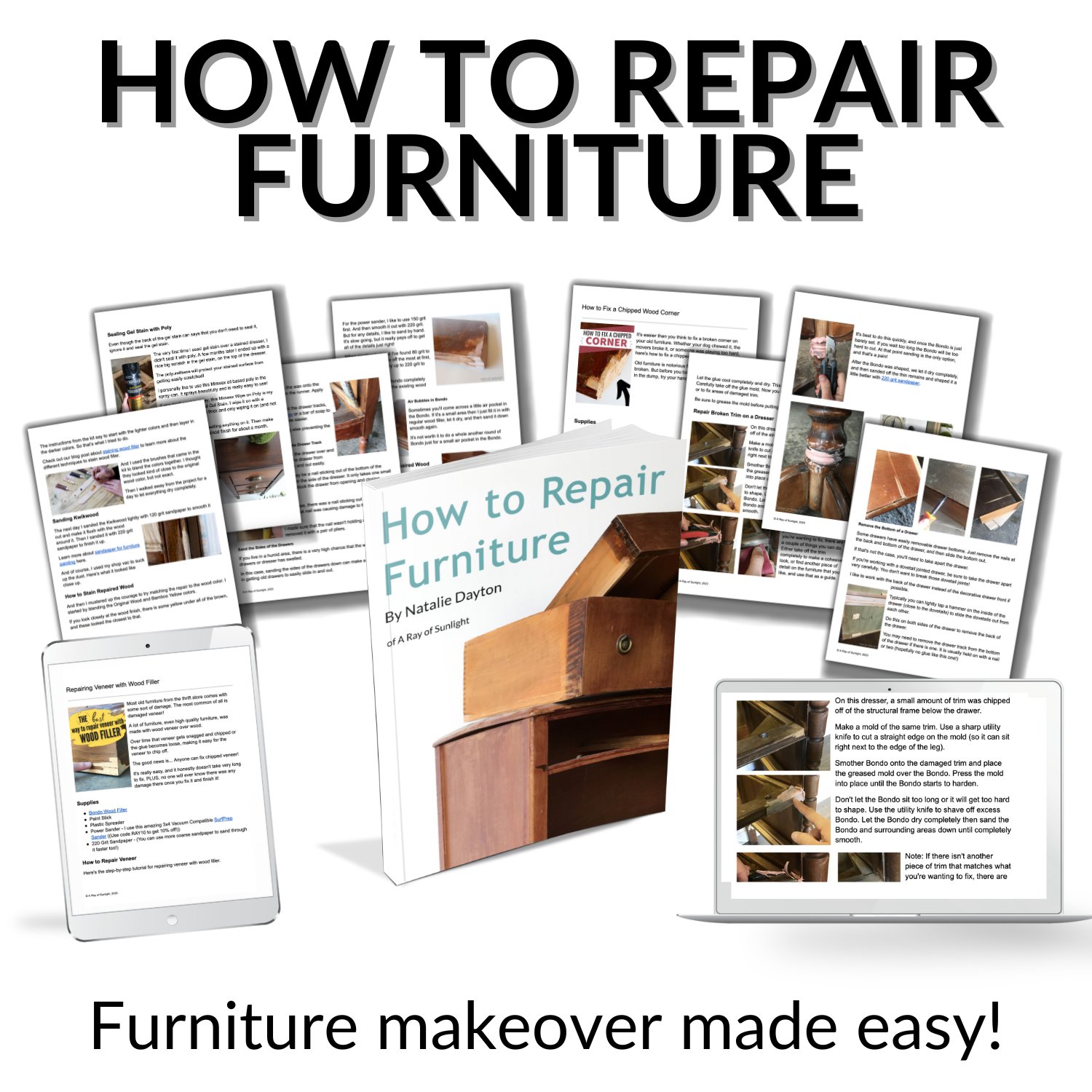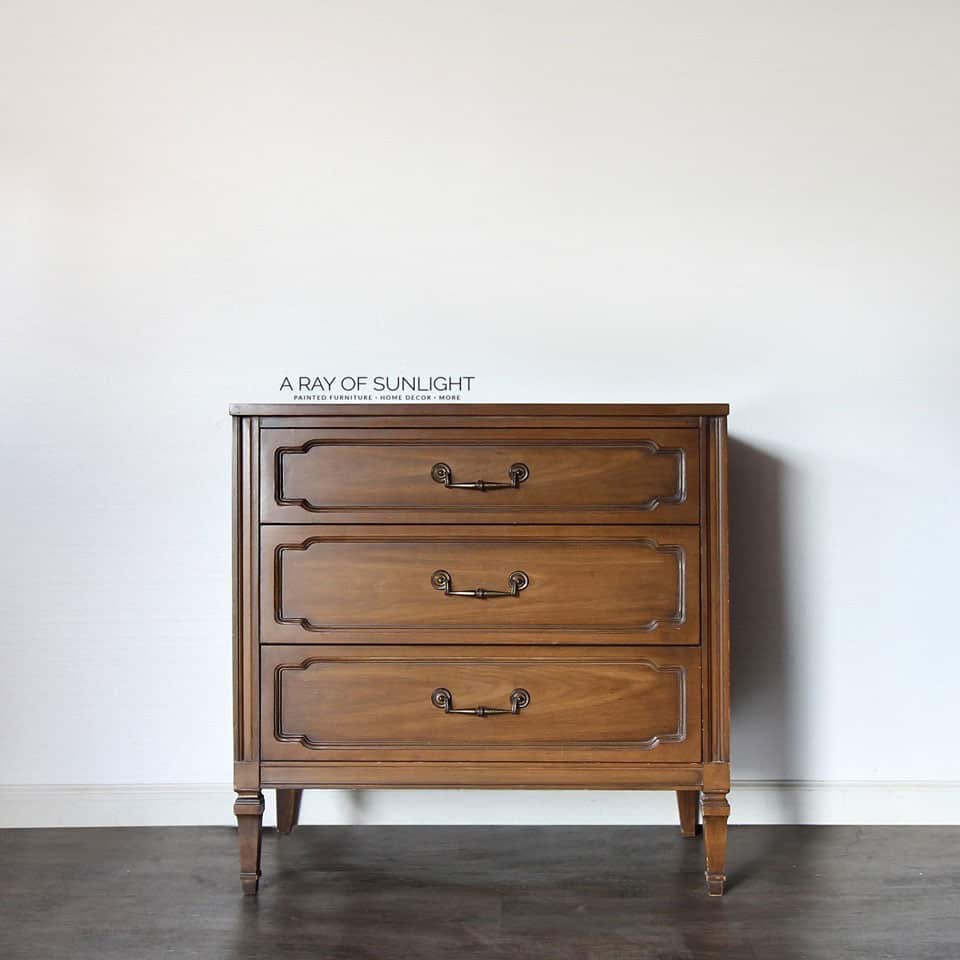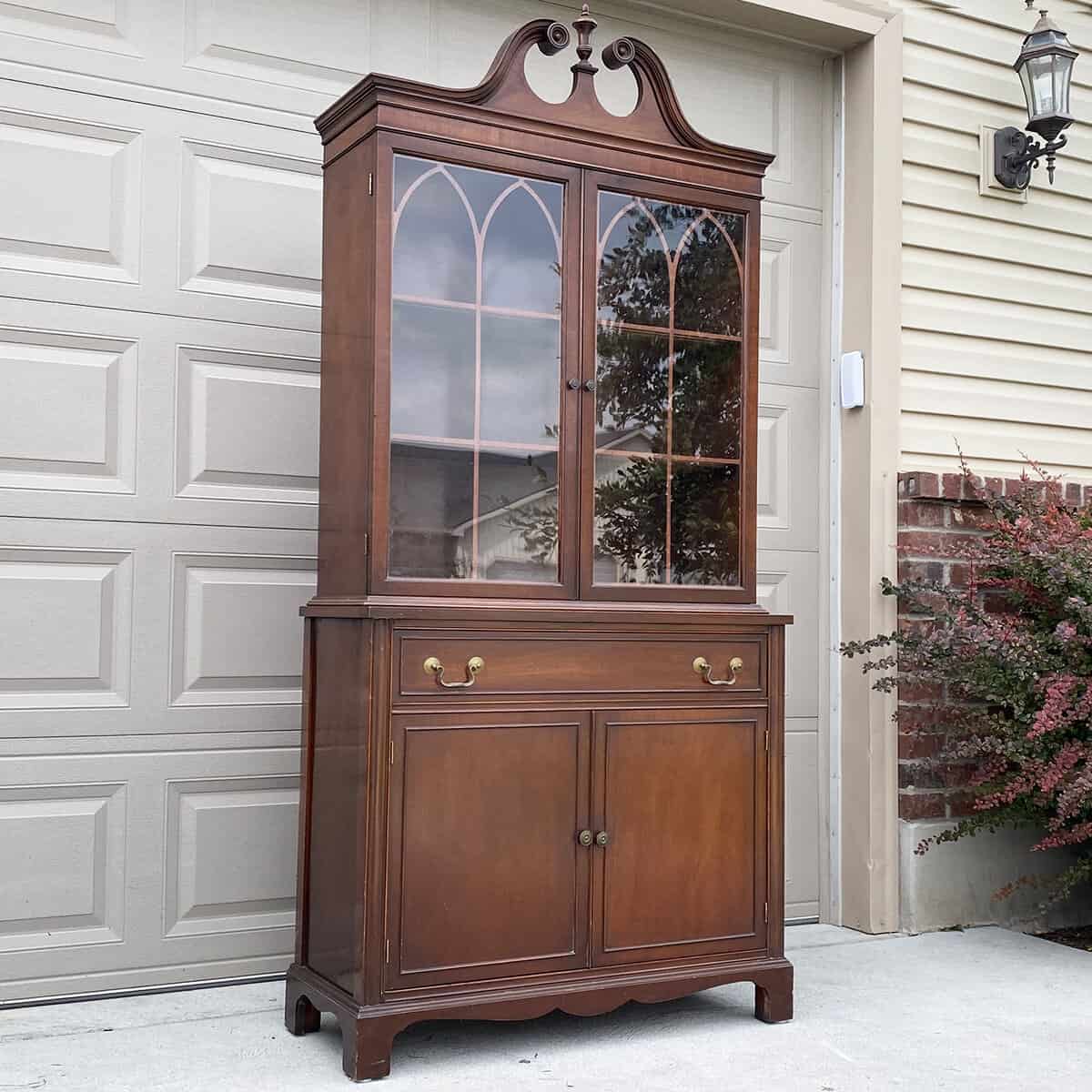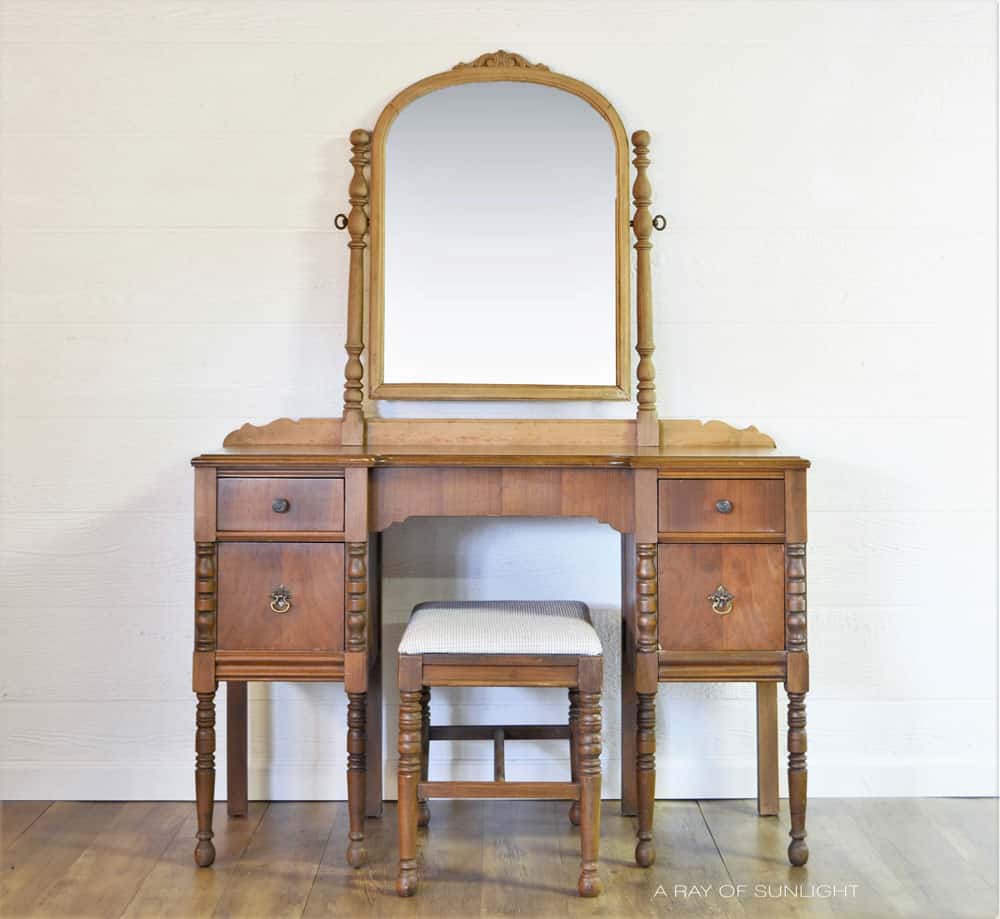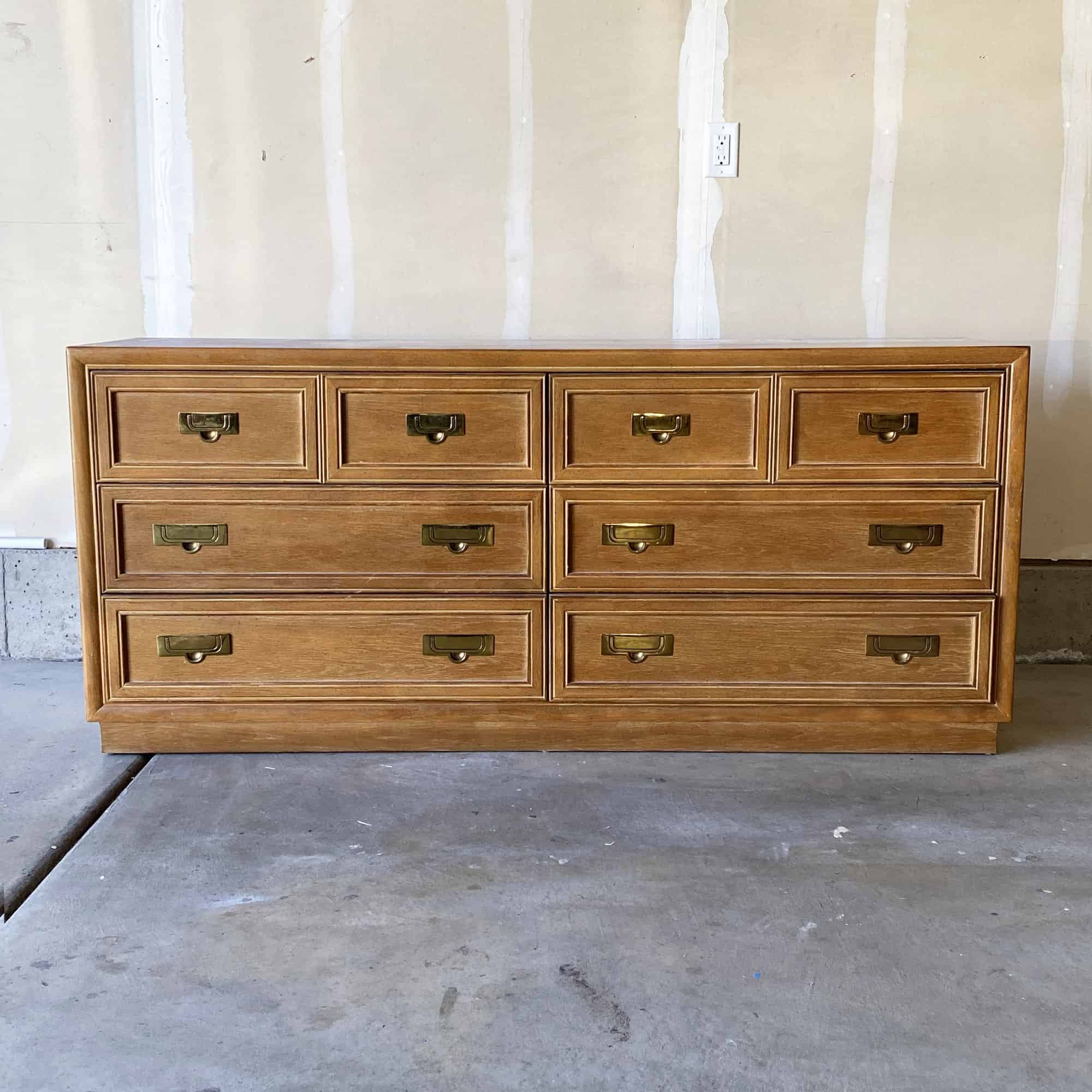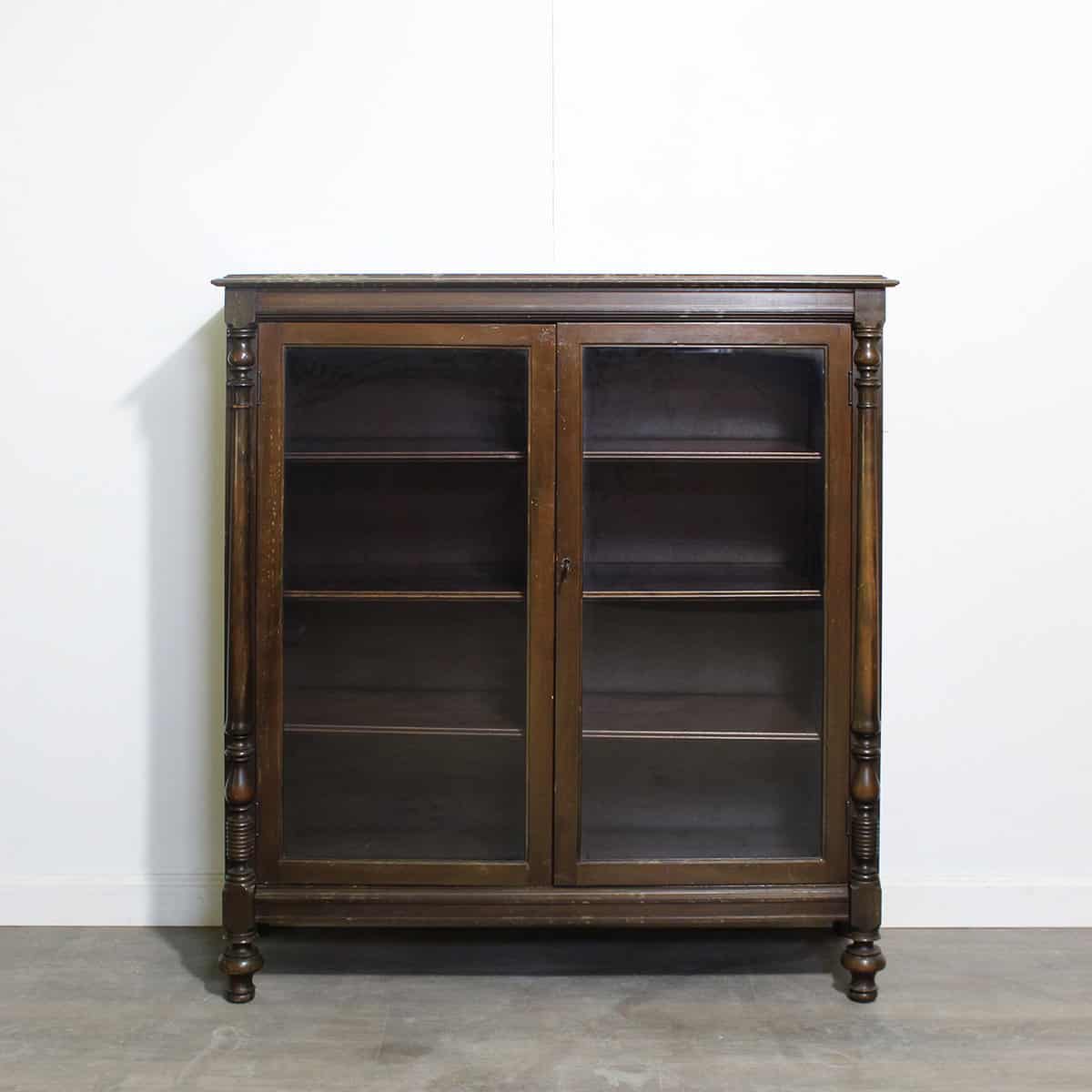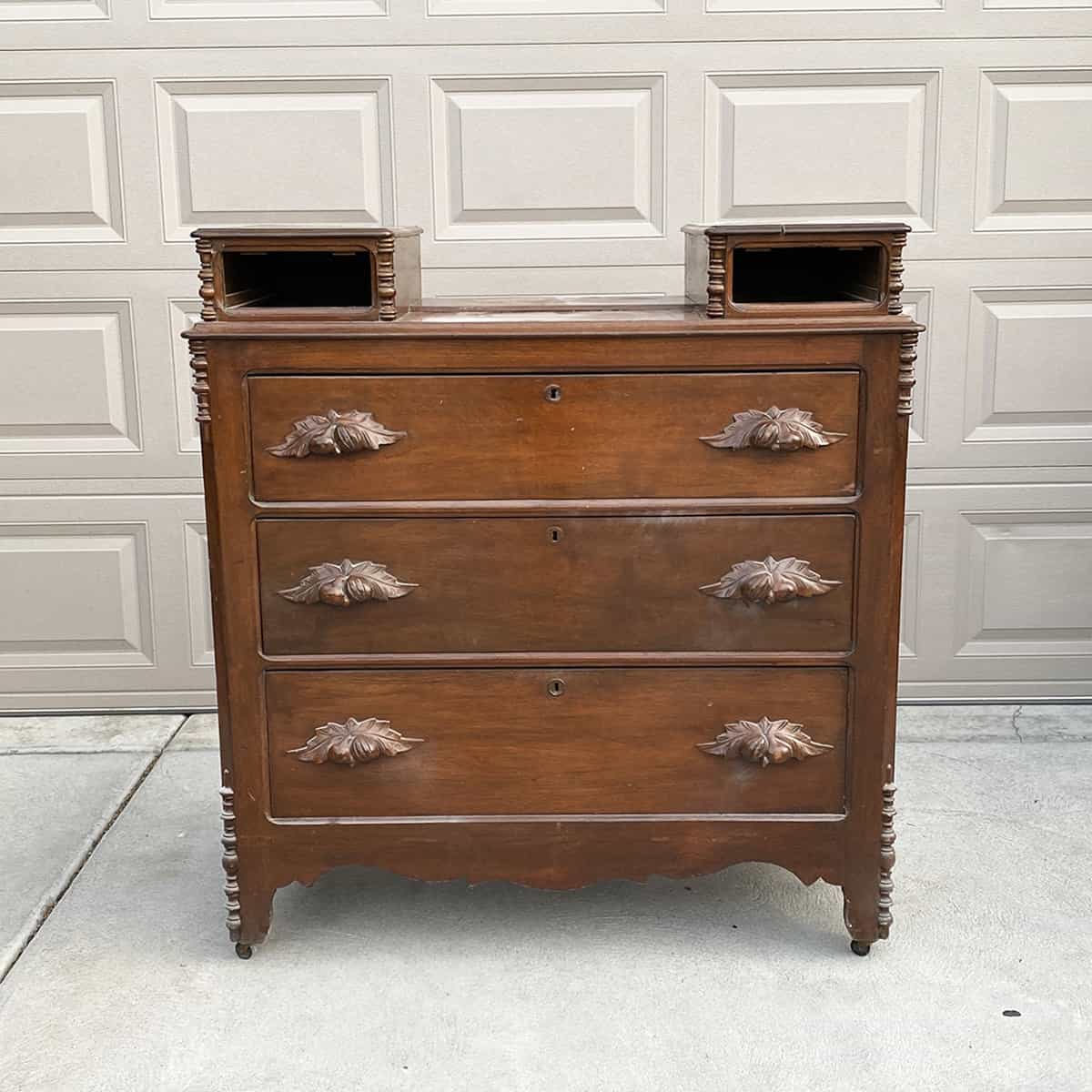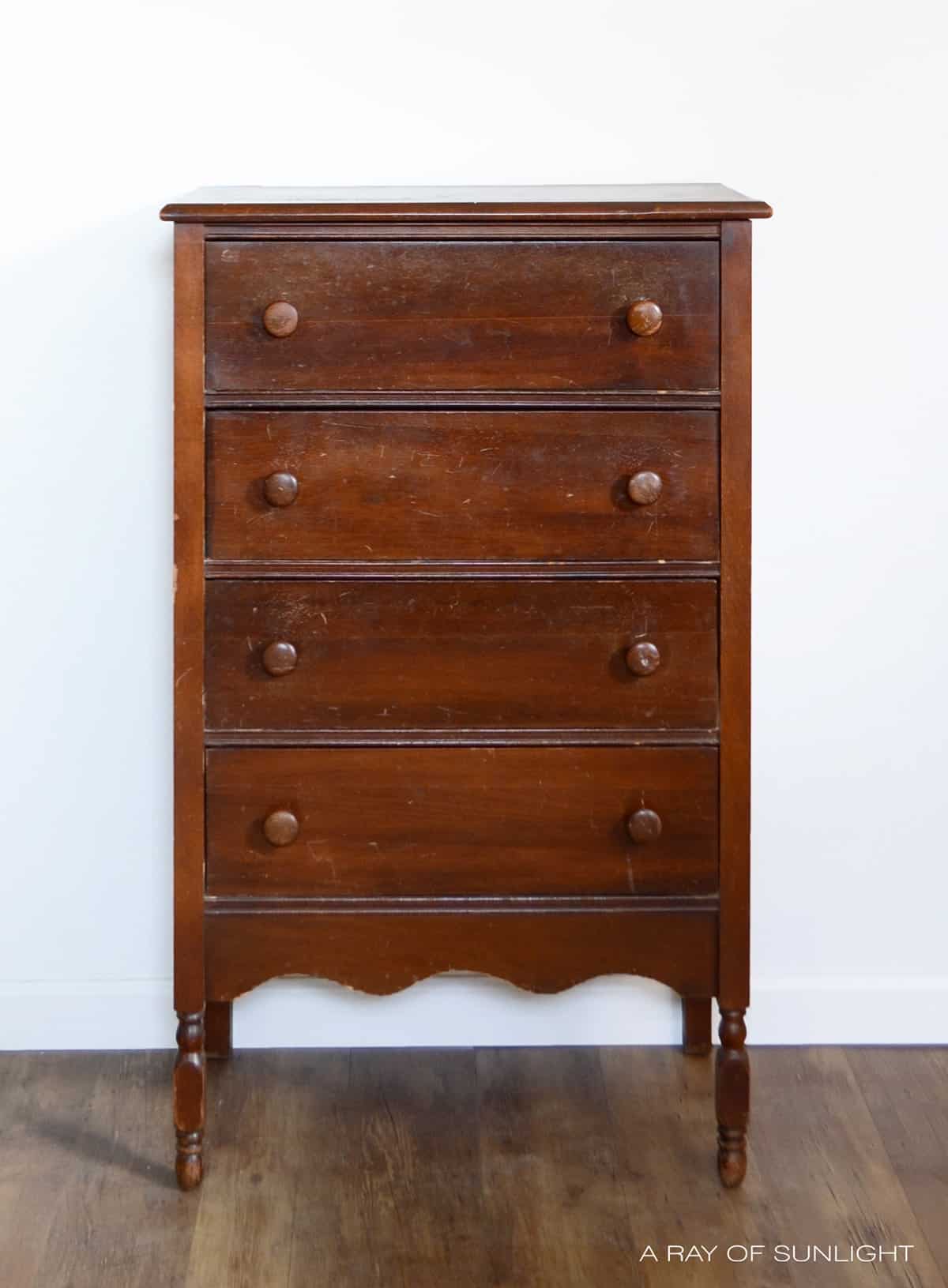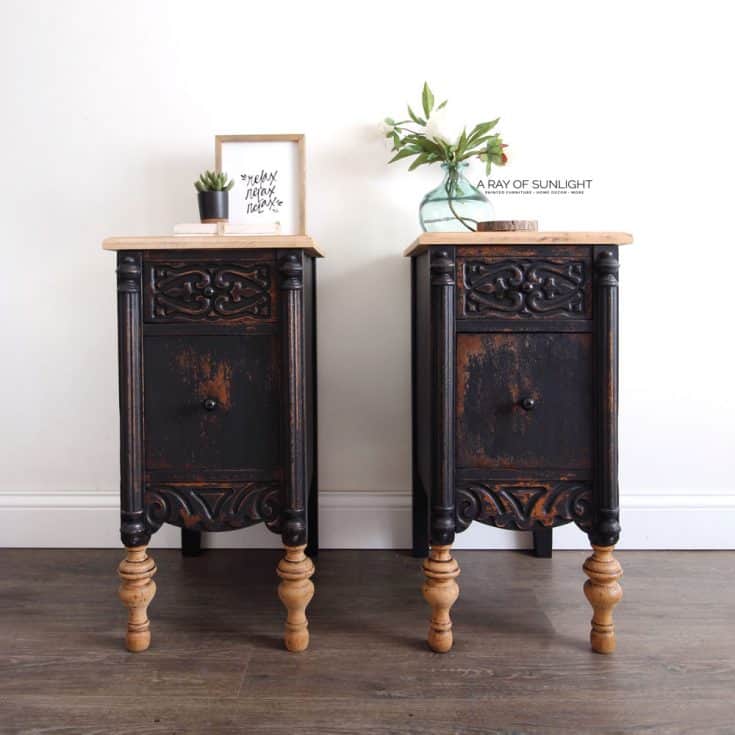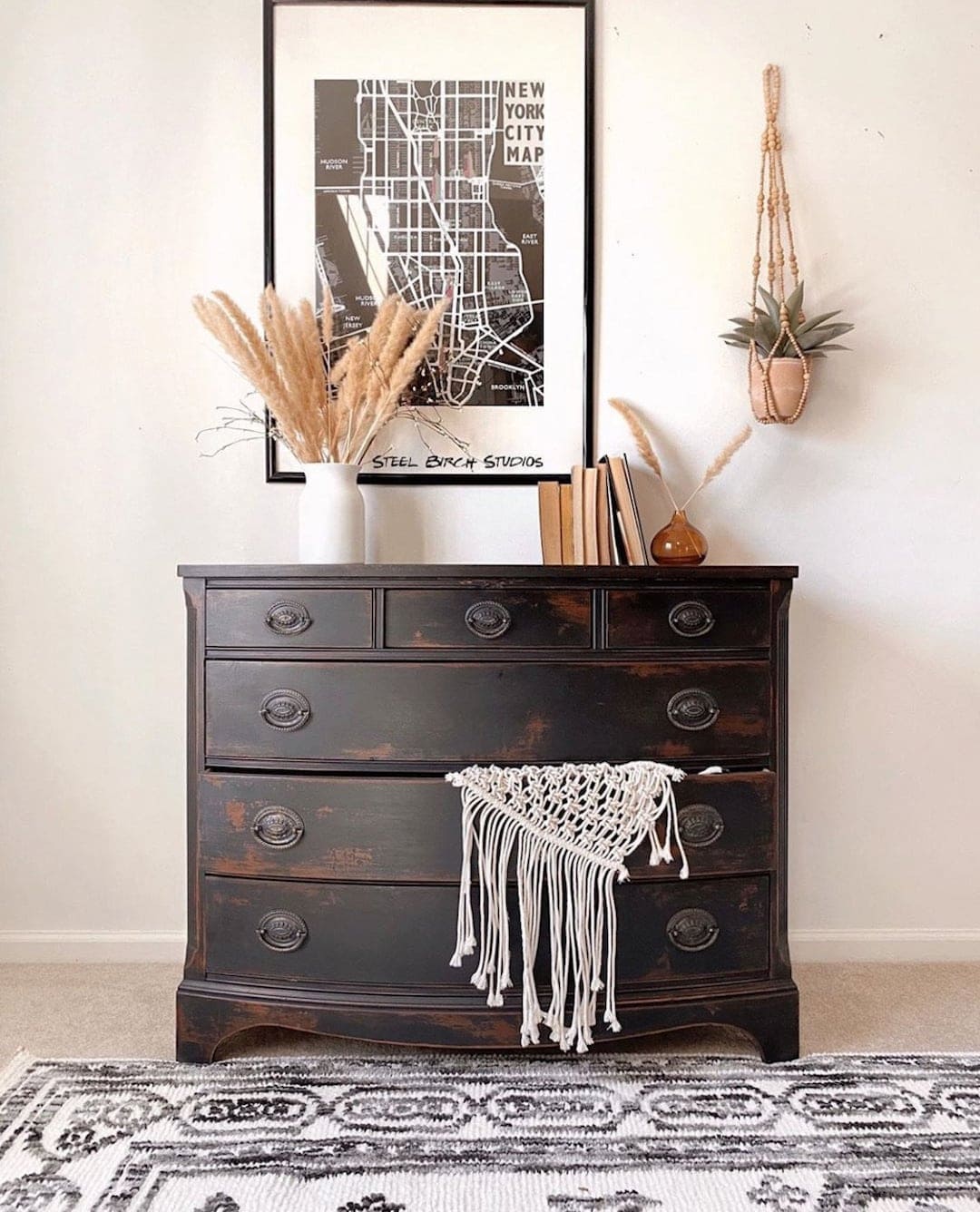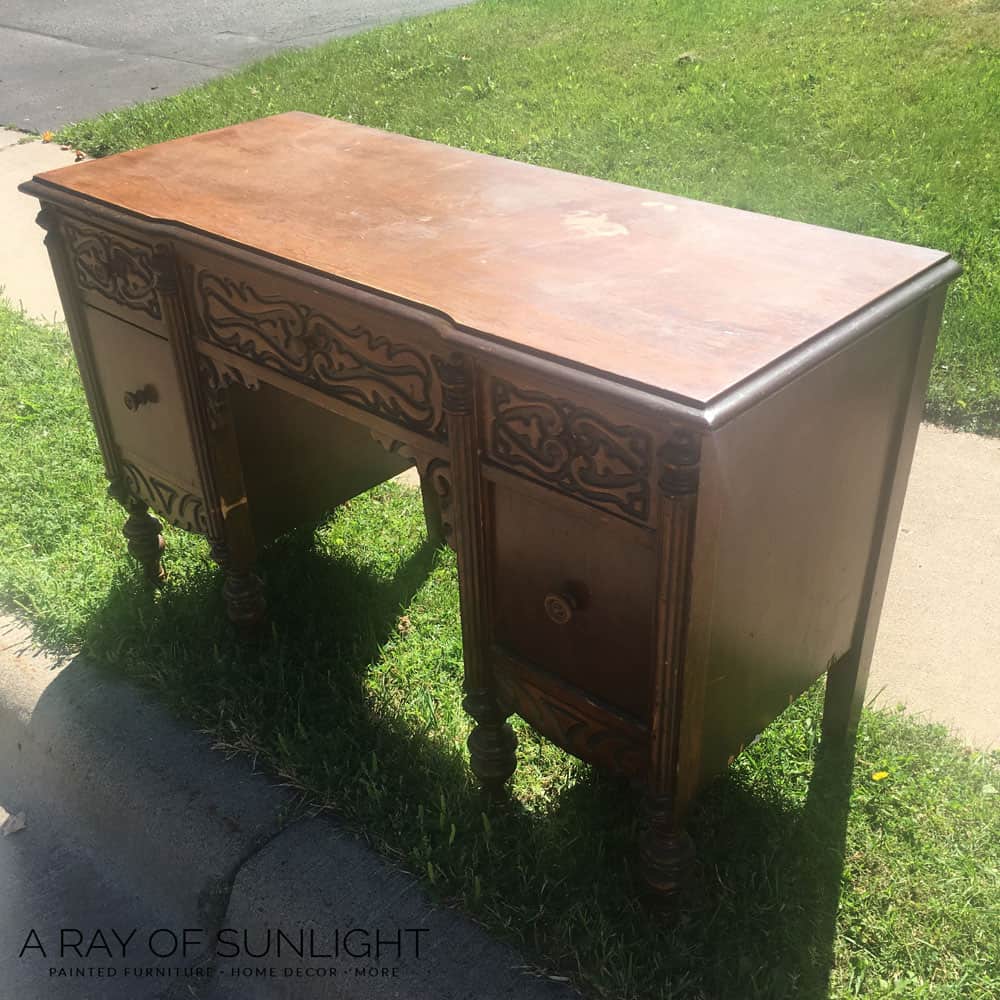How to Repurpose Desks into Tall Skinny Nightstands
These old desk makeovers are THE BEST! You start with one piece of furniture and end up with two! So if you’re wondering what to do with an old desk, here’s how to repurpose desks into tall skinny nightstands! Ohhh this is definitely one of my favorite makeovers yet!
Get more painted nightstands ideas here!
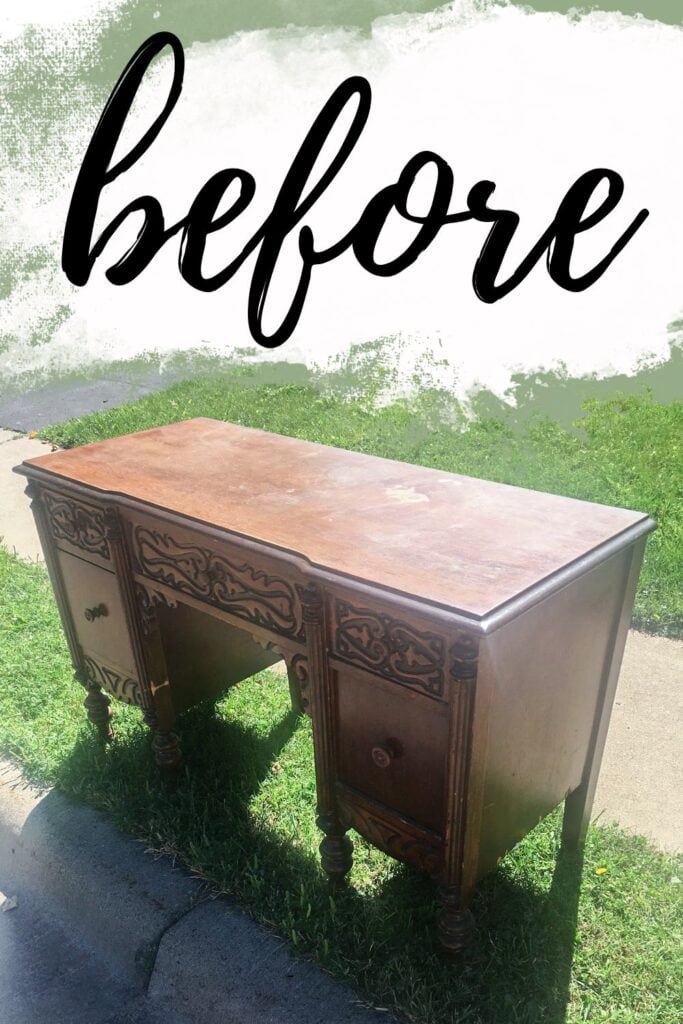
We found this little desk for FREE on the side of the road! The second I saw it, I knew I had to get it! I brought it home and immediately got to work on it.
Get the Secrets!
Grab this super convenient How to Repair Furniture Ebook with all of our secrets on how to repair furniture for only $14.
You can print it out and have instant access whenever you come across damaged furniture, and know exactly how to fix it!
Click on the picture of the book to purchase!
Like most vintage desks, this desk was pretty short, so it would have been hard to use as a desk. BUT because I’ve repurposed desks before, I knew it would be perfect to turn into nightstands!
I’ll go through the exact process that I did to turn a desk into nightstands.
Your desk may be a little bit different, but with this as a guide, I know you can figure it out. (At the bottom of this post there are links to other desks I’ve repurposed too!)
Check out more painted desk ideas here.
Supplies Used To Repurpose Desks Into Tall Skinny Nightstands
As an Amazon Associate, I earn from qualifying purchases. I also may earn from other qualifying purchases with other companies or get free product to review and use. All opinions are my own.
- Electric Screwdriver
- Flexible Drill Bit Extension
- Chisel
- Hammer
- JigSaw
- Bondo
- Power Sander
- Table Saw or Circular Saw
- Router
- 100, 150, 220 Grit Sandpaper
- Black Beach Milk Paint by Shackteau Interiors Milk Paint
- Zibra Round Paint Brush
- Waterbased Polyurethane
How to Take the Desk Apart
The first step to repurposing an old desk into tall skinny nightstands is to take it apart.
Remove the Top
Usually, the top of any piece of furniture is held on with screws. Sometimes you can see these screws from the back, like this.

Other times, the screws are on the inside of the piece, making the process just a little bit more difficult.
But! You can either remove the back panel to access them, or you can use this little bendable tool on your drill to reach them.
The screws for the front are usually right above the drawers. So all you have to do is remove the top row of drawers, and then look up above where the drawers were. Like this!
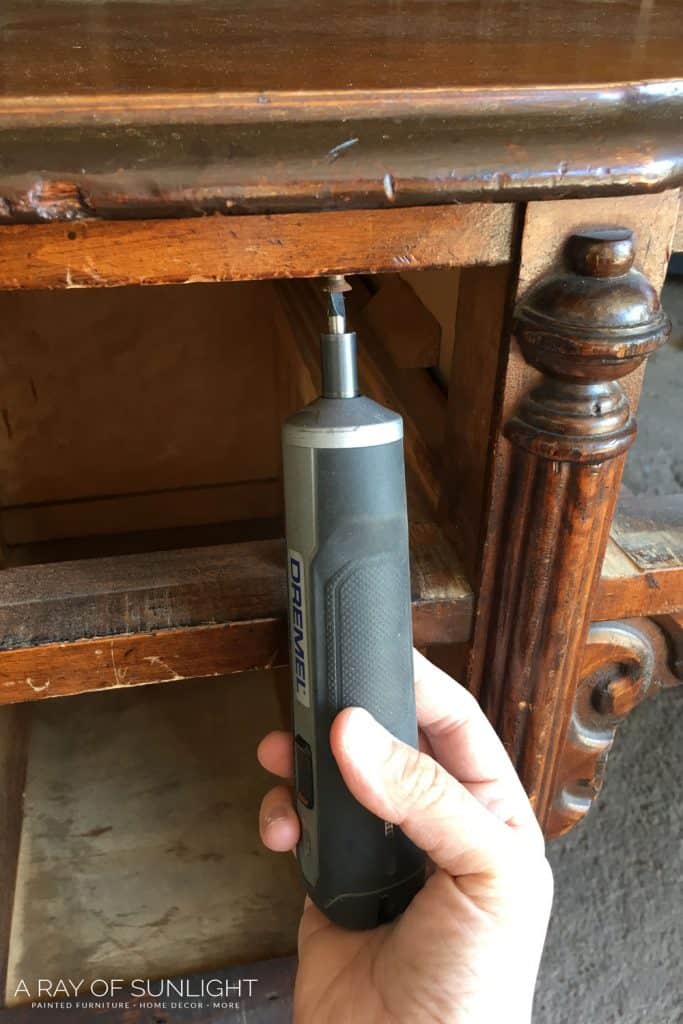
**Note: I absolutely love this little electric screwdriver! It’s fast and easy to remove screws, and screw screws back in! All you have to do is push it in, and it turns for you! No more big bulky drill or trying to unscrew things by hand.
Sometimes the top still won’t come off. Like with this desk! So I used a chisel (you could use a pry bar if you have one!) and a hammer to pry the top off.
Turns out, the top was glued to wood boards, that were glued to the desk.

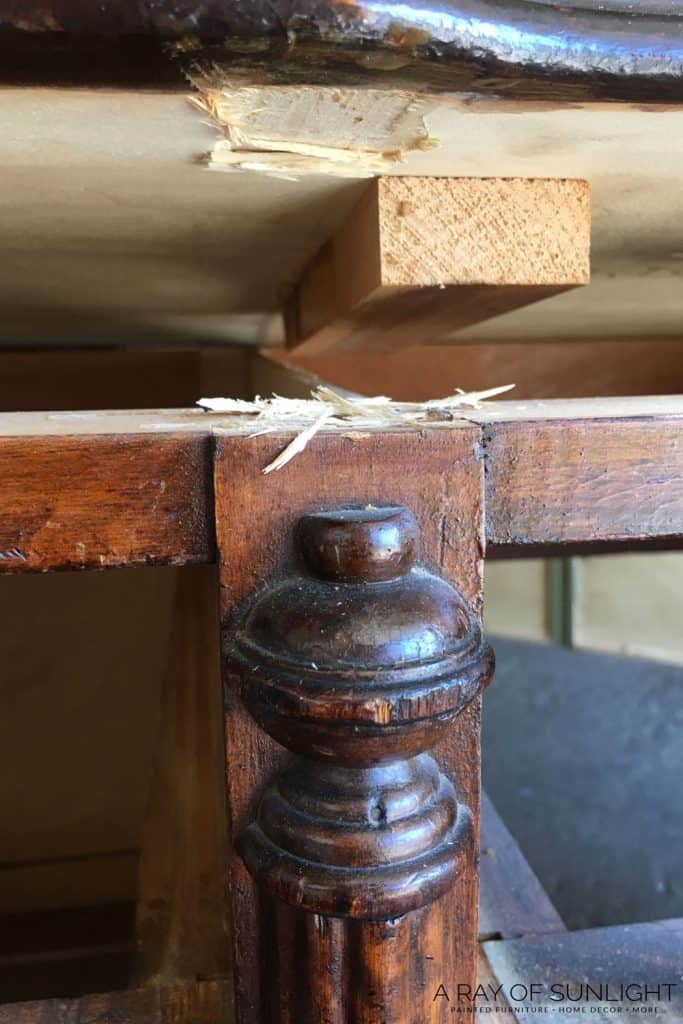
Remove the Middle Drawer Supports
Once the top is off, the next step in taking apart a desk is to remove the middle area. This is usually where the middle drawer is.
Remove that middle drawer if you haven’t already. And then grab your tool of choice!
A JigSaw is the fastest way to remove these support pieces. (Especially if the support on the back is one long piece that goes across the whole piece!)
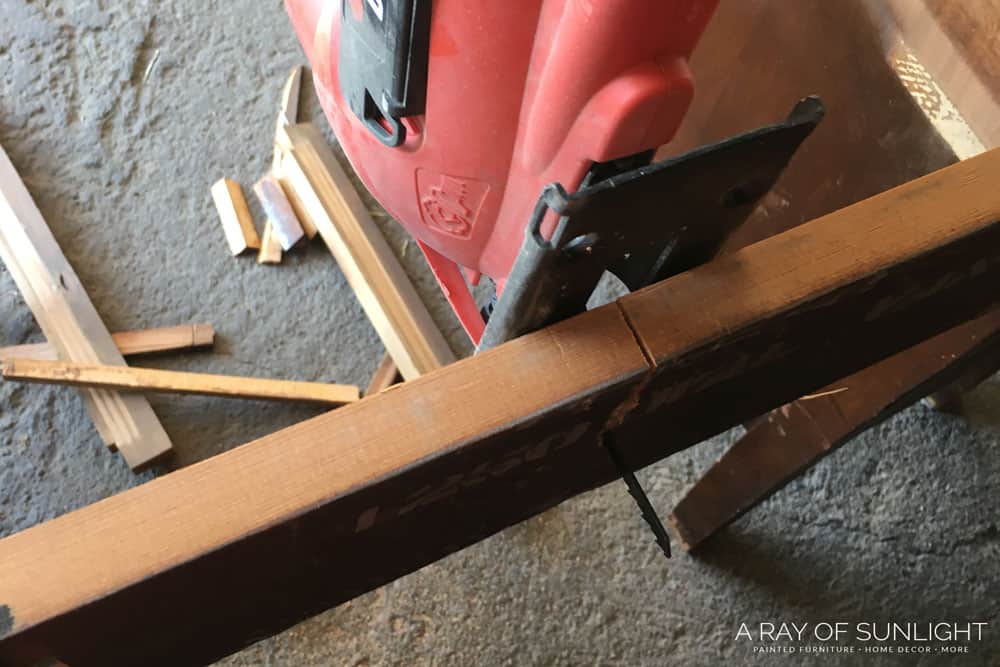
You can cut these support pieces in half, and then they usually pull right out of their holes.
If you don’t want to ruin the pieces of wood, you can also use the chisel or hammer again to pry them off. Like this!
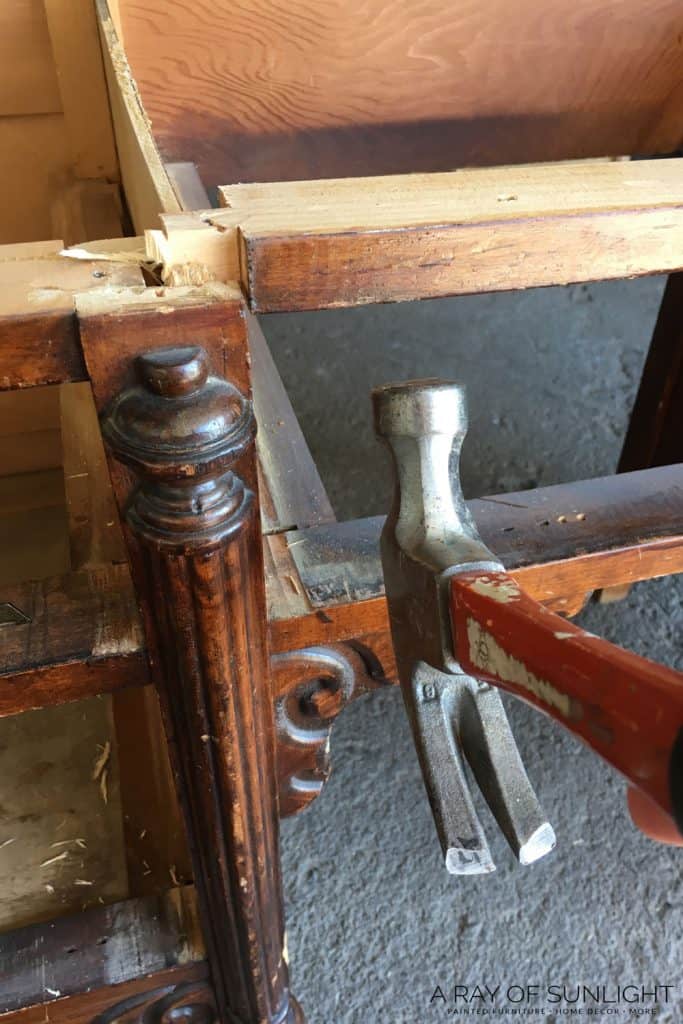
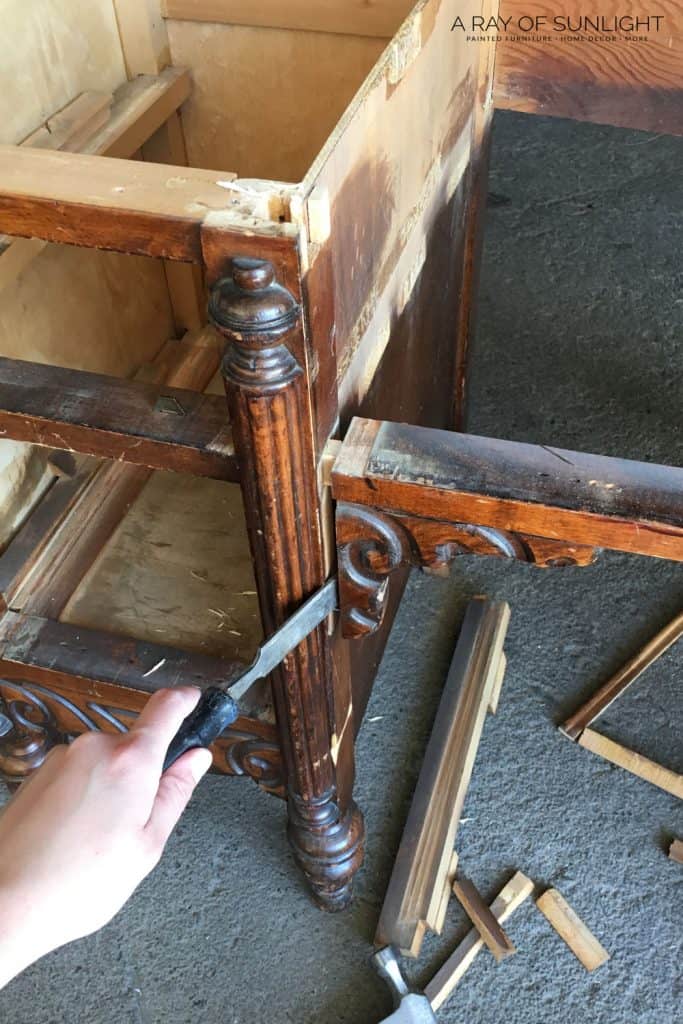
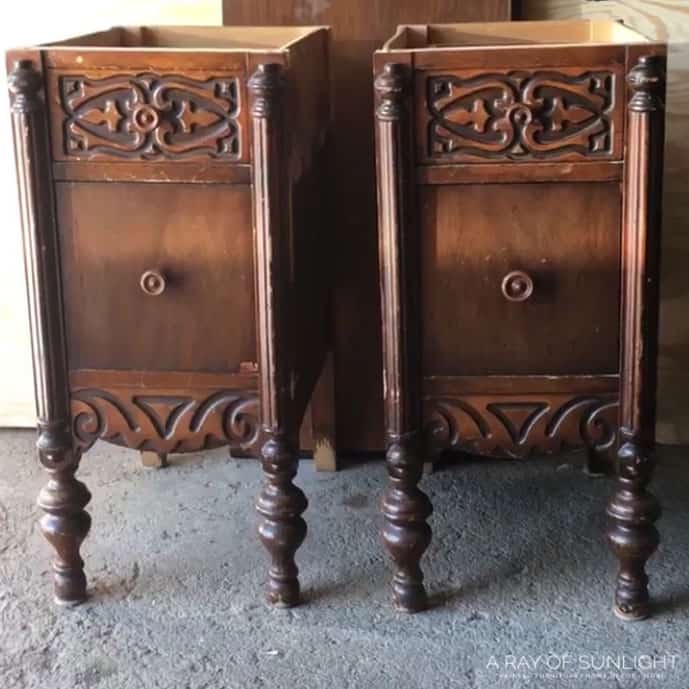
Mission take the desk apart, complete!
How to Repair the Damage that’s Left Behind
But, you might notice that there are these huge holes left behind (where the supports used to attach to each side).
There might even be some extra damage from trying to get those support pieces out!
Don’t worry though! It’s really easy to fill them in. But please, please don’t try to fill them in with regular old wood filler. Wood filler will shrink, crack, and take foooorrrreeevvveeerr to dry.
Instead, use Bondo or KwikWood to fill them in!
Repair Damaged Wood With Bondo
I personally like to use this Bondo for these repairs.

If you aren’t familiar with Bondo, it’s one of my go-to, must-have products to have on hand.
Check out my Bondo wood filler review here.
It’s a two-part epoxy that you mix together, and it starts to harden rock-hard in about 5 minutes. You can sand it after about 30 minutes.
Check out this post to learn how to fix chipped wood furniture using Bondo.
For these large holes, I usually use two applications. The first application of Bondo is to fill in the majority of the damage.
After it’s dry, I sand it smooth with my power sander. Here are the best sanders for furniture.
Then I apply one more coat to get any small places that I missed or places that had some air pockets from the first round.
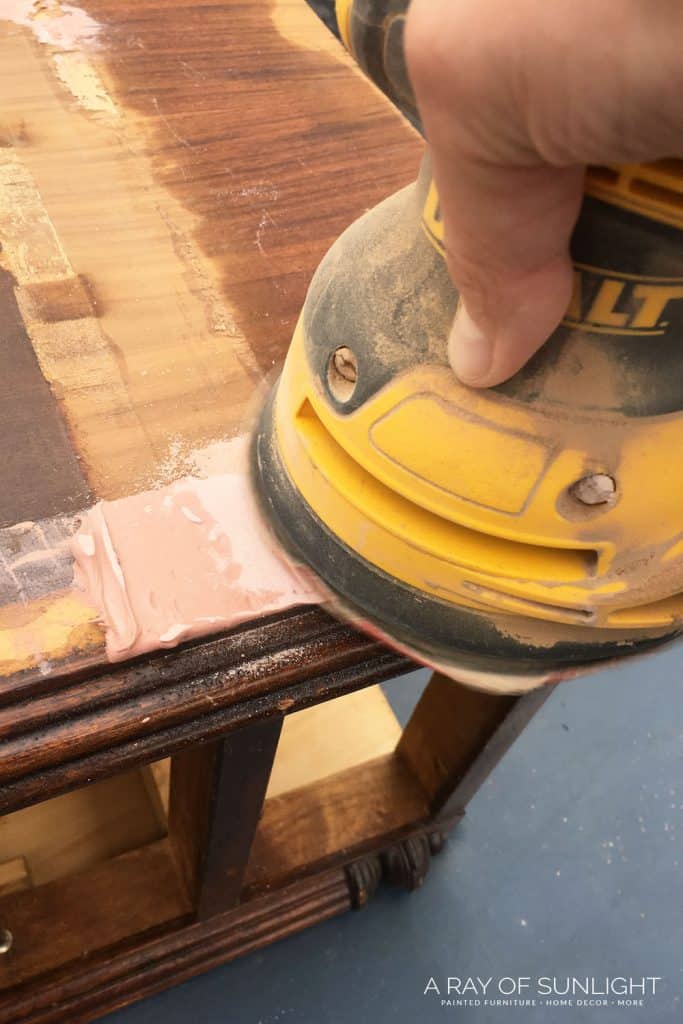
Two applications are usually perfect! Just beware that Bondo is very, very stinky. And it can be time-consuming to sand if you can’t use a power sander.
But you can use my secret little trick in this post on repairing damaged furniture to save some time if you’re stuck hand sanding!
Repair Damaged Wood with KwikWood
If you need to use a less stinky way to fill in the damage, KwikWood is a great option! It doesn’t stink like Bondo, but it dries just as hard as Bondo in 1 hour or so.
But it’s a lot more expensive. So filling these large holes can get a bit pricey compared to filling them with Bondo.
Check out how to use KwikWood in this post on how to change hardware… It’s close to the bottom of the page.
Cutting New Desk Tops
You can either go out and buy new wood for the tops, or you can reuse the old top!
Here’s how to use the old top! First, you need to know how big you need the new tops to be.
Just measure the width and depth of the new nightstands and add at least 3/4″ overhang for each side (so at least 1 1/2″ to the width and depth).
I can’t remember exactly how much overhang I cut on these, but I bet it was around 1″ on each side.
Once you have your measurements, you can cut your new tops out of the old top with your table saw or circular saw.

Now, you won’t be able to cut them the same way that it was sitting on the desk. If you do, you’ll have 2-3 edges that look professional, and one edge (where you cut) that will be straight.
Sure, you can router that 1 edge with a router. But more than likely you’re not going to have a router bit that is exactly the same!
So, I like to cut the top of the nightstands out going perpendicular to how the top was sitting on the desk. I was able to cut 2 new tops out of the old top.
Now the wood grain moves from front to back on the nightstands, instead of side to side like it did on the desk.
Make Pretty Routered Edges
Then I used my old router to put a simple detailing on the edges.
Remember, most furniture doesn’t have any routered detail on the back edge of the top though! So only router out 3 of the sides.
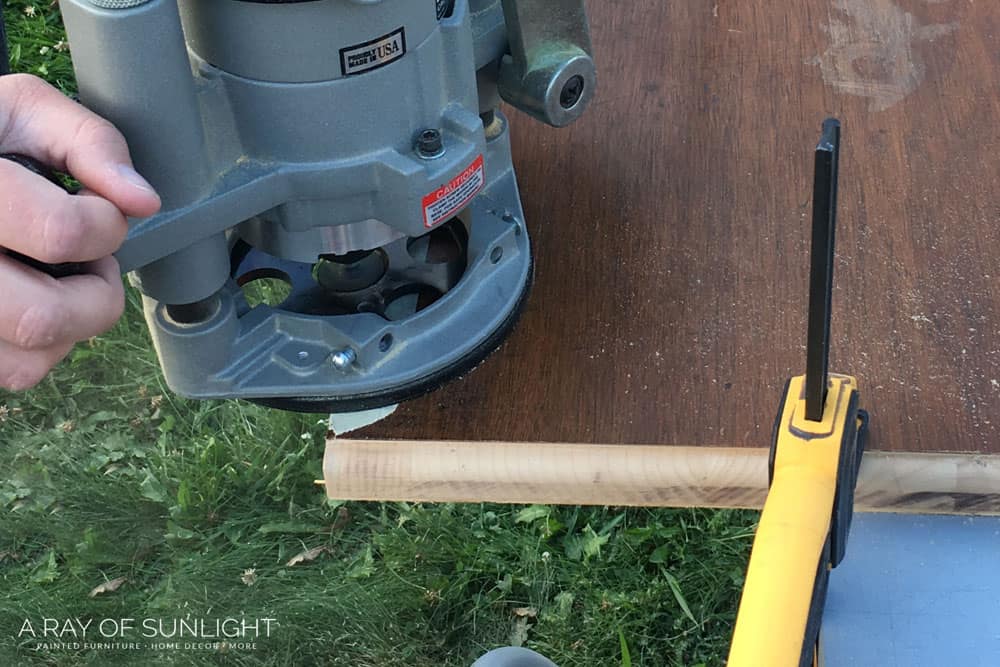
I goofed and routered all 4 edges. (Not the worst mistake ever, but I still wish I would have remembered to not router the back sides.)
**Note: Since this top was made of wood and wood veneer, I put a little bit of tape along the edges to keep the router from chipping the veneer.
Then I sanded both of the new tops down to bare wood. I loved the natural wood look, so I didn’t stain them!
BUT…if you decide to darken up the wood a little bit, read this post on how to stain wood darker!
How to Attach the New Tops
Simply line up the tops and use the old screw holes and screws to reattach the new tops to the nightstands.
How to Sand Round Legs
When I saw the little legs on the desk, I knew that I wanted to do something special with them!
With the tops staying a natural wood finish, I opted to sand the legs down to bare wood. This was actually super easy and the old finish basically flaked off for me.
I started with 100 grit sandpaper, rubbing the sandpaper around the curve of the legs.
I used the edge of the folded sandpaper to get into the details of the legs, but I also wanted to leave just a little bit of the old finish in the details to make them stand out.

Once most of the old finish was off, I moved to 150 grit sandpaper to smooth the wood out, and then to 220 grit sandpaper.
I’ve found that this sandpaper that I linked above is the best sandpaper for legs. It doesn’t rip or tear easily like low-quality sandpaper, and it doesn’t lose it’s grit the moment it touches wood!
You definitely get what you pay for when it comes to sandpaper! Learn more about sandpaper for furniture painting here.
Sometimes the old finish doesn’t easily come off though. In those cases, I like to use Citristrip (the best furniture stripper!) to remove the old finish.
Holy moly it was totally worth the extra time spent to get natural wood legs! Check out this post on how to refinish wood furniture legs to see how!
Paint Night Stands with Black Milk Paint
Finally, after the damage was repaired, the legs were sanded, and the tops were cut, I moved on to the black milk paint!
Since I was using black paint, I wasn’t worried about bleed through, but I did worry that the Bondo would make the paint look uneven.
So a little trick with powdered milk paint is to paint a coat of this water-based poly over the Bondo before applying any paint.
It acts like a primer of sorts to make the painted finish look nice and even.
Then I painted 2 coats of Black Beach milk paint by Shackteau Interiors milk paint with one of my favorite Zibra paint round brushes.
The round brush is amazing for getting into all of the detail on these nightstands! Read more about the best paint brushes for painting furniture here!
I swear Shackteau Interiors milk paint and Zibra paint brushes were made for each other!

How much paint do you need? You can paint a large piece of furniture, like a 9-drawer dresser, or a buffet with 1 pint of black beach milk paint.
For these nightstands, I only used a small amount of the pint!
I wanted the finish to look chippy and old, so I didn’t scuff sand (to prep furniture for paint, I always scuff sand the old finish!) the front drawers.
The sides got completely sanded down to bare wood when I was removing the excess Bondo, so I knew those wouldn’t chip. But the drawers did exactly what I wanted them to do!

If you aren’t familiar with powdered milk paint, read this post to learn everything you need to know about painting furniture with milk paint!
I love milk paint because it’s super fast to use! And it creates a unique old-looking chippy finish that only powdered milk paint can create. It really looks authentically old!
But if you don’t want a chippy finish, the black paint we used on this black vintage farmhouse dresser makeover is a great black paint to brush on, and the black paint from this post on how to easily paint black furniture is an AMAZING black paint to spray!
To finish them off, I sanded the paint a little to distress and help the paint chip. Here are 6 distressing furniture techniques you can do!
If you like how these nightstands turned out, check out more rustic painted furniture here.
Then I sealed the milk paint and the natural wood legs and top with 3 coats of my favorite water-based poly. Learn ALL of my tips and tricks on how to spray polyurethane here!
If you’re wondering is two-toned furniture in style, check out this makeover guide to find out.
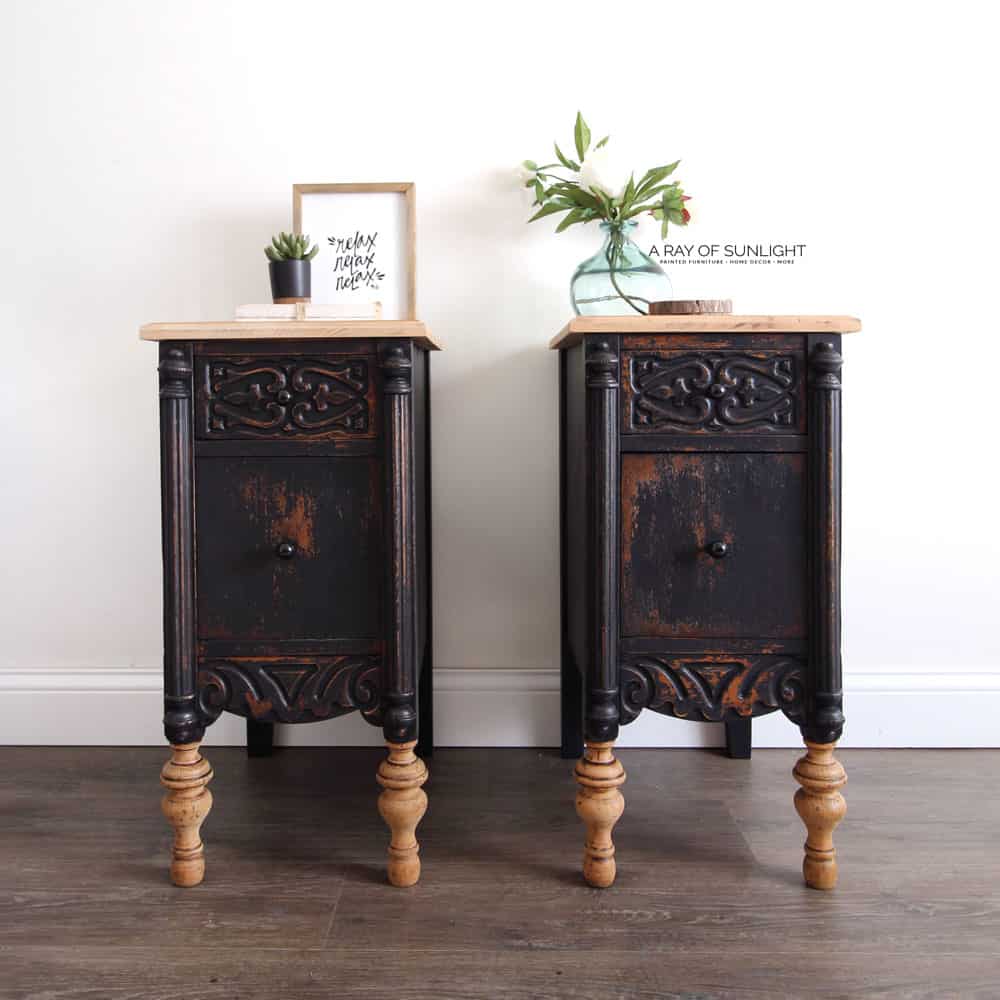
More Before And After Makeovers
Click any of these “before” photos below to view the “after” of that makeover.
More Repurposed Desk Makeovers
- How to Upcycle a Desk into a Pair of Nightstands
- DIY Black Farmhouse Nightstands
- Repurpose a Desk into Nightstands
- Vanity Turned into Nightstands
Follow us on YouTube to get more tips for painting furniture.
Or share your project with us on our Facebook Group and be part of our community. See you there!


